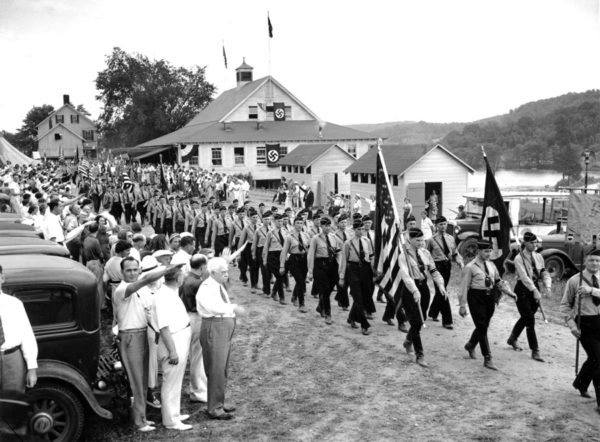England, France, and the United States were certainly no strangers to Hitler and his Nazi party philosophies during the 1930s. In fact, England and America were home to large fascist organizations while France hosted several influential right-wing fascist groups which would directly influence the Vichy government and its collaboration with Germany.
America saw the founding of the pro-Nazi “Friends of New Germany” (FoNG) in 1933 after Hitler gave his permission for the organization’s formation. The FoNG closely followed the Nazi party’s tactics including propaganda, harassment of Jews, and infiltration of other German American groups. Congress investigated the FoNG and determined it represented a direct subsidiary of the Nazi party. By late 1935, FoNG ceased to exist but was quickly replaced by the German American Bund with Fritz Julius Kuhn as its Bundesführer. The Bund mimicked the real Nazi party with respect to its organizational structure. Training camps were set up around the country and rallies were held with members displaying the Hitler salute. The Bund’s primary attacks were centered on Franklin D. Roosevelt, Jewish organizations, and Communists.

After Bund leaders traveled to Berlin, giving the impression that Hitler was supporting the Bund, Congress passed the 1938 Foreign Agents Registration Act requiring foreign agents to register with the United States State Department ⏤ an act which remains in place today. After this, Germany purposely tried to distance itself from the Bund. A rally at Madison Square Garden on 29 February 1939 resulted in violence between protesters and Bund storm troopers after the president was referred to as “Frank D. Rosenfeld” and the New Deal was referred to as the “Jew Deal.” Predictably, the Bund was dissolved in 1941. Sadly, it was followed in 1959 by the American Nazi Party, founded by George Lincoln Rockwell, and is known today as the World Union of National Socialists. Read More “British Fascists and a Mitford”
